Steel Products
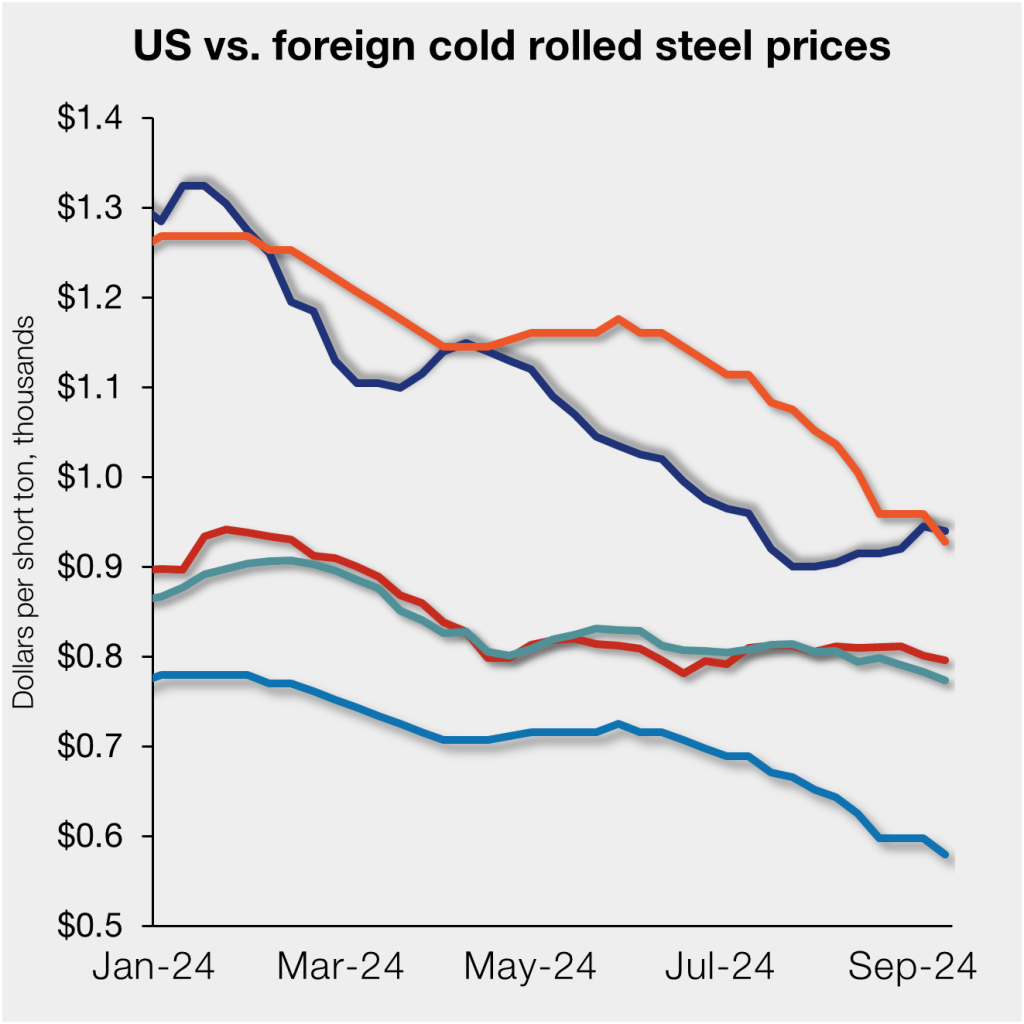
US CR price gains ground on imports
Written by David Schollaert
September 13, 2024
The price gap between US cold-rolled (CR) coil and offshore product is a bit broader this week despite slightly lower tags stateside. The premium is still widening since falling to a 10-month low in late July.
Domestic CR coil tags remain above offshore prices on a landed basis. US prices ticked down slightly week on week (w/w) but have been mostly rising since also falling to a 10-month low in July. This is while offshore tags have been largely easing.
US CR coil prices averaged $940 per short ton (st) in our check of the market on Tuesday, Sept. 10, down $5/st vs. the prior week. Despite the steady improvement of late, CR tags are still down roughly $385/st from a year-to-date high of $1,325/st in January.
Domestic CR prices are, theoretically, roughly 24.1% more expensive than imports. That’s up from 22.2% last week. While US CRC prices are still higher than offshore material, the US CR premium is down from a 31.5% premium in early January.
In dollar-per-ton terms, US CR is now, on average, $171/st more expensive than offshore product (see Figure 1). That compares to $160/st more expensive on average last week. That’s still well below a recent peak of $311/st in mid-January.
The charts below compare CR coil prices in the US, Germany, Italy, South Korea, and Japan. The left-hand side highlights prices over the last two years. The right-hand side zooms in to show more recent trends.
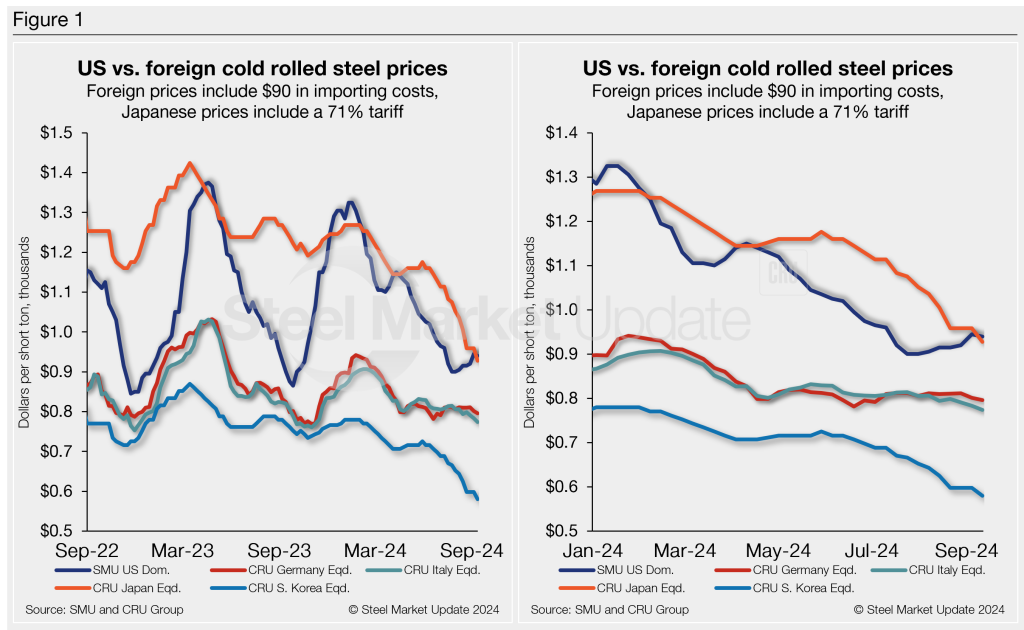
Methodology
This is how SMU calculates the theoretical spread between domestic CR prices (FOB domestic mills) and foreign CR prices (delivered to US ports): We compare SMU’s US CR weekly index to the CRU CR weekly indices for Germany, Italy, and East Asia (Japan and South Korea). This is only a theoretical calculation. Import costs can vary greatly, influencing the true market spread.
We add $90/st to all foreign prices as a rough means of accounting for freight costs, handling, and trader margin. This gives us an approximate CIF US ports price to compare to the SMU domestic CR price. Buyers should use our $90/st figure as a benchmark and adjust up or down based on their own shipping and handling costs. (Editor’s note: If you import steel and want to share your thoughts on these costs, please get in touch with the author at david@steelmarketupdate.com.)
East Asian CR coil
As of Thursday, Sept. 12, the CRU Asian CR price was $490/st, down $18/st w/w and $45/st lower over the past month. Adding a 71% anti-dumping duty (Japan, theoretical) and $90/st in estimated import costs, the delivered price to the US is $928/st. The theoretical price of South Korean CR exports to the US is $580/st.
As noted above, the latest SMU CR price is $940/st on average, which puts US-produced CR theoretically $12/st below CR product imported from Japan. But US tags are still $360/st more expensive than CR imported from South Korea.
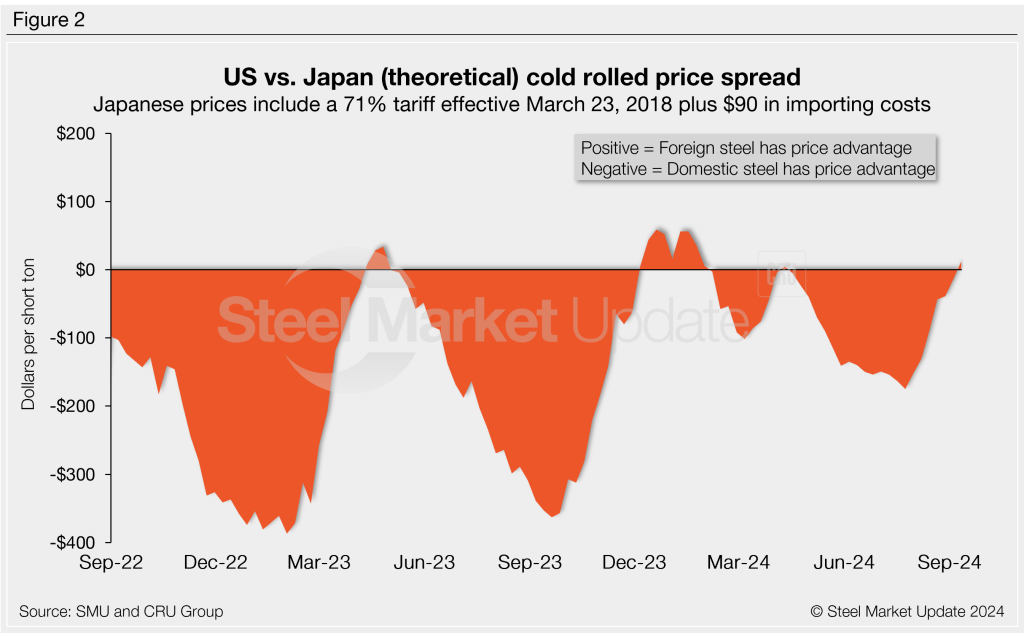
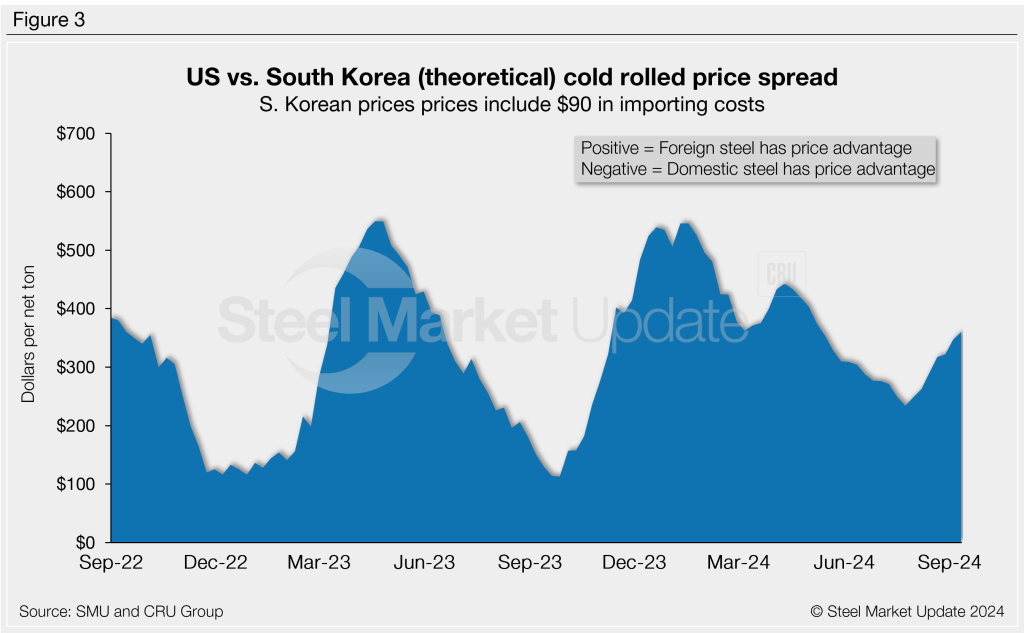
Italian CR coil
Italian CR prices were down $5/st to roughly $684/st this week. After adding import costs, the price of Italian CR delivered to the US is, in theory, $774/st.
That means domestic CR is theoretically $166/st more expensive than CR coil imported from Italy. The spread is up $4/st from last week but still $287/st below a recent high of $453/st mid-December.
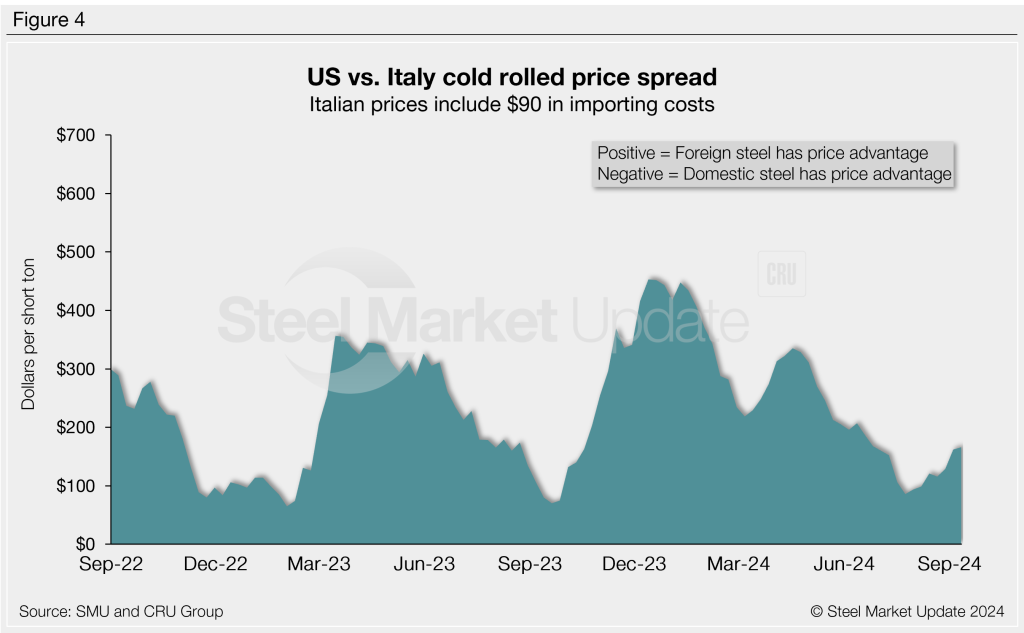
German CR coil
CRU’s German CR price was down just $5/st vs. last week. After adding import costs, the delivered price of German CR is, in theory, $796/st.
The result: Domestic CR is also theoretically $144/st more expensive than CR imported from Germany. The spread is flat w/w but still well below a recent high of $431/st in the first week of 2024.
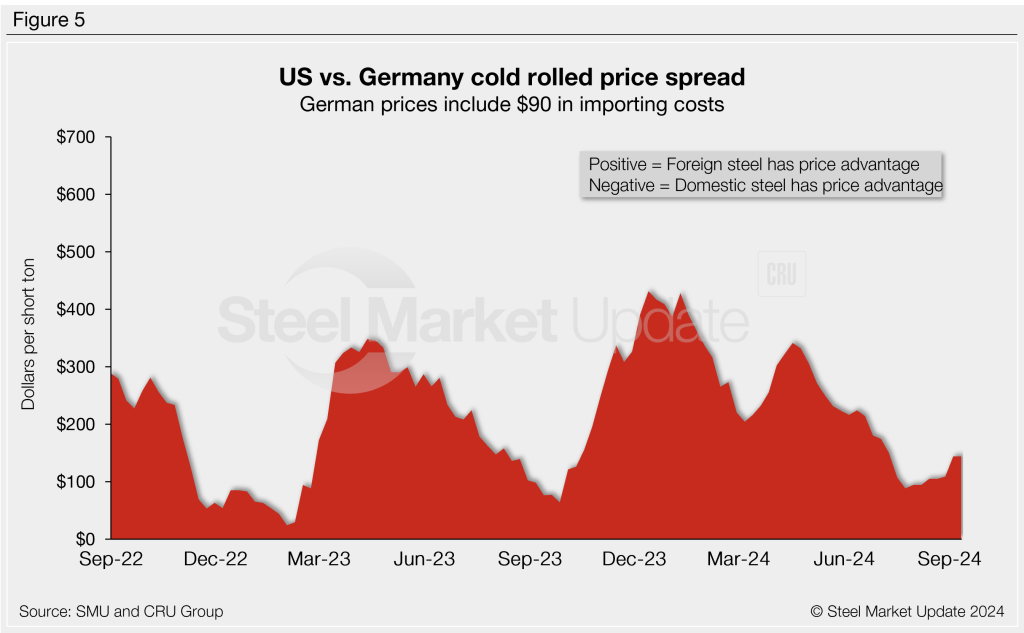
Notes: We reference domestic prices as FOB the producing mill, while foreign prices are CIF the port (Houston, NOLA, Savannah, Los Angeles, Camden, etc.). Inland freight from either a domestic mill or a port is important to keep in mind when deciding where to source from. It’s also important to factor in lead times. In most market cycles, domestic steel will deliver more quickly than foreign steel. Note also that, effective Jan. 1, 2022, the blanket 25% Section 232 tariff was removed from most imports from the European Union. It was replaced by a tariff rate quota (TRQ). Therefore, the German and Italian price comparisons in this analysis no longer include a 25% tariff. A similar TRQ with Japan went into effect on April 1, 2022. South Korea is subject to a hard quota rather than a tariff.

David Schollaert
Read more from David SchollaertLatest in Steel Products

Nucor increases plate prices by $40/ton
Nucor aims to increase prices for steel plate by $40 per short ton (st) with the opening of its May order book. The Charlotte, N.C.-based steelmaker said the increase was effective with new orders received on Friday, March 28, in a letter to customers dated the same day. The company said the price hike applied […]
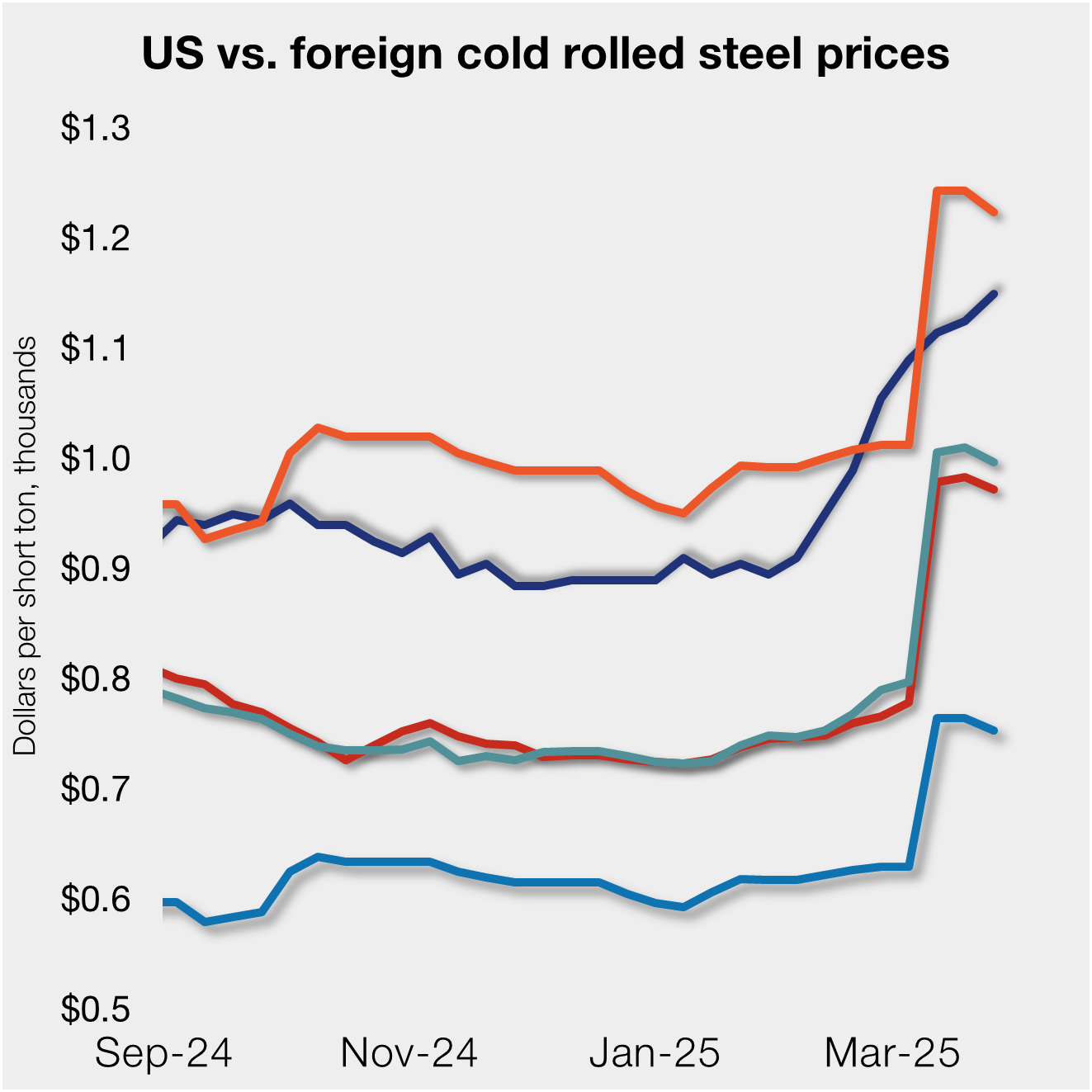
US CRC price gains ground over imports
US cold-rolled (CR) coil prices increased again this week, while offshore prices declined.

SMU Steel Demand Index momentum slows
Steel Market Update is pleased to share this Premium content with Executive members. Contact info@steelmarketupdate.com for information on how to upgrade to a Premium-level subscription. Growth in SMU’s Steel Demand Index eased in March after reaching a four-year high in late February. Despite a moderate gain, the index remains in expansion territory. The Steel Demand […]

Leibowitz: Impact of tariffs on US manufacturers
On February 10, President Trump announced a massive restructuring of tariffs on steel and aluminum. Those changes took effect on March 12, and they will impact US manufacturing. What will the impact be? Bye-bye exclusions Perhaps the most important change, which hits imports from all countries, is the loss of a product exclusion process to […]

SMU flat-rolled market survey results now available
SMU’s latest steel buyers market survey results are now available on our website to all premium members. After logging in at steelmarketupdate.com, visit the pricing and analysis tab and look under the “survey results” section for “latest survey results.” Past survey results are also available under that selection. If you need help accessing the survey results, or if […]
